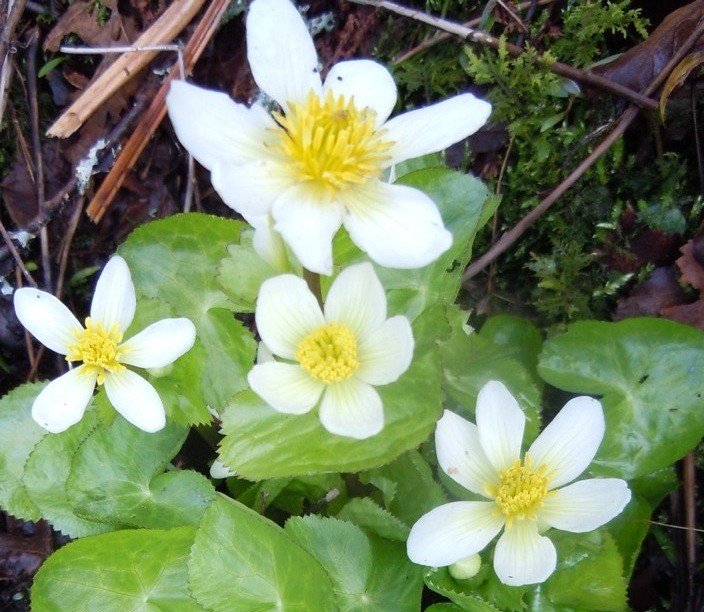Caltha leptosepala howellii
(Caltha leptosepala howellii)

Description
Caltha is a genus of rhizomatous perennial flowering plants in the family Ranunculaceae (buttercup family), to which ten species have been assigned. They occur in moist environments in temperate and cold regions of both the Northern and Southern Hemispheres. Their leaves are generally heart-shaped or kidney-shaped, or are characteristically diplophyllous (the auricles of the leaf blades form distinctly inflexed appendages). Flowers are star shaped and mostly yellow to white. True petals and nectaries are missing but the five or more sepals are distinctly colored. As usual in the buttercup family there is a circle of stamens around (two to twenty-five) free carpels. Caltha species are hairless, dwarf to medium size (1–80 cm high) perennial herbs, with alternate leaves. These leaves are simple (in all Northern Hemisphere species), or have one pair of lobes at the base (in C. sagittata) which is mostly oriented at a straight angle to the larger top lobe but is sometimes in the same plane (in some of its northern populations), or the basal lobes are merged with the top lobe to form two (occasionally three) appendages (in all remaining species) which are attached next to the midvein, with the adaxial surfaces of top lobe and appendages facing each other. This condition of the Southern Hemisphere species is referred to as diplophylly. All species have stalked basal leaves, and some also have one or few leaves on the flowerstalk. The flowers are single on a short stalk in the middle of the rosette of basal leaves (Southern Hemisphere species) or in a mostly few-flowered corymb, without or with one or few mostly sessile leaflike stipules. Northern Hemisphere species have kidney to (elongated) hart-shaped leaves and stipules, with simple toothed or scalloped margins. Southern Hemisphere species between them show a variety in leafshapes. In C. appendiculata the top lobe is regularly more or less trifid, with an indent at the tip of each segment, but it is also often spoon-shaped with an entire margin with a more or less retuse tip. The top lobe in C. dionaeifolia is split into ovate left and right halves, which are distinctly folded towards each other (plicate), and have a concave upper surface, an entire margin with toothlike hairs regularly spaced around its margins while the appendages are similar in shape but ½–⅔× as large.
Taxonomic tree:







